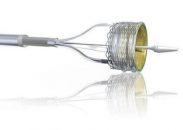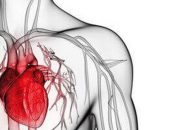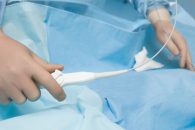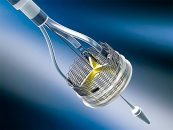A mean gradient ≥40 mmHg, an aortic valve area ≤1 cm², or a combination of both, during dobutamine stress echocardiography, correctly qualifies as severe aortic stenosis in about half of all patients. The other half consists in cases of pseudo-severe aortic stenosis. In turn, a projected aortic valve area ≤1 cm² is a much better indicator than the…
Reverse Myocardial Remodeling Following Valve Replacement
After aortic valve replacement, focal fibrosis does not resolve, but diffuse fibrosis and cell hypertrophy regress. As expected, this regression comes with structural and functional improvement that suggest it is a dynamic process. Fibrosis can be measured and quantified with cardiovascular MR, which makes it a potential therapeutic objective. Left ventricular hypertrophy is a key…
Leading Manufacturer of Balloon-Expandable Valves Launches Self-Expanding Device
Edwards Lifesciences could have been satisfied after the success of the PARTNER trials and the improvements to its balloon-expandable valve (mainly as regards the delivery system profile and paravalvular leak reduction) in its last model, SAPIEN 3. However, it was not. The company decided to keep going, developing a valve that is radically different from its…
Lotus Valve in Real Life Patients: the near total lack of leaks is its greatest strength
Even though the incidence of complications in transcatheter aortic valve replacement (TAVR) have significantly decreased, there is one in particular that remains a concern since, when mild, it is associated to increased events rate. This complication is prosthetic paravalvular leak , which happens between the native annulus and the stent. The Lotus valve, completely repositionable, uses a…
The Perks of Conscious Sedation in TAVR
The main advantage of transcatheter aortic valve replacement (TAVR) has always been its less invasive nature, compared against surgery. Many of the advances in this technique revolve around making it even less invasive, increasing the gap between the two. The kind of anesthesia has been one of these many advances. There are several reports (in general from…
Cardiac Damage: Should we start to assess it?
Courtesy of Dr. Carlos Fava. The current recommendation for aortic valve replacement is based on stenosis severity based on valvular criteria (mean transvalvular gradient, peak aortic velocity and valve index area) and the presence of symptoms, in addition to comorbidities, mainly for risk stratification. However, ventricular damage and/or its effect on cardiovascular hemodynamics are not regarded…
TAVR in Patients with Pure vs. Mixed Aortic Stenosis: Benefits and Evolution
Courtesy of Dr. Carlos Fava. Transcatheter aortic valve replacement (TAVR) has been proven to reduce mortality and improve the quality of life of patients with pure severe aortic stenosis (PAS). However, there is a significant number of patients who experience mixed aortic stenosis associated with moderate/severe aortic regurgitation (MAS). These subjects were excluded from the PARTNER…
Lung Disease and TAVR: Beneficial for a Reduced Group of Patients
Chronic Lung Disease often affects patients with severe aortic stenosis undergoing transcatheter aortic valve replacement (TAVR) or surgery. In fact, this is why patients with lung disease are often deemed inoperable and prescribed TAVR. This is the first time the benefit of TAVR has been assessed in this group of patients, for symptoms of these conditions can…
New Study Confirms TAVR Durability at 5 Years
The ADVANCE study was designed to evaluate the safety and effectiveness of transcatheter aortic valve replacement (TAVR) with self-expanding prosthesis CoreValve in “real world” patients with symptomatic, severe aortic stenosis at high surgical risk. Patients were enrolled from 44 experimental centers in 12 countries; treatment approach and choice of anaesthesia were determined by the local Heart Team.…
REPRISE III: Need for Pacemaker and Paravalvular Leak with Lotus
A recent presentation at London Valves took a closer look at the REPRISE III trial as regards two points that generated much discussion, such as need for a pacemaker and paravalvular leak. REPRISE III had previously demonstrated that the Lotus is noninferior to first-generation CoreValve and Evolut R in terms of safety. Additionally, it proved to be superior…









